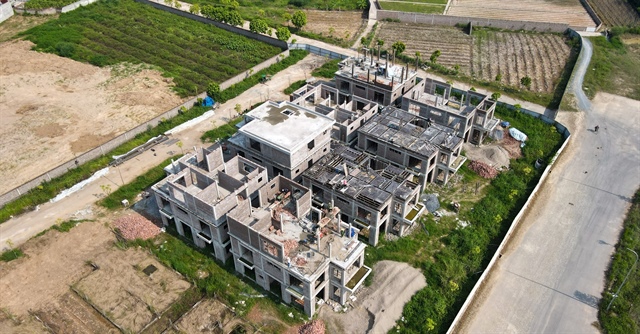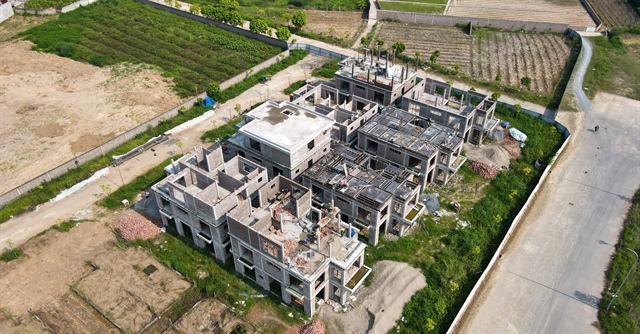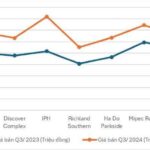Citizens only need to inform, no need for a building permit
At the May Government meeting on law building, Prime Minister Pham Minh Chinh directed a decisive cut in unnecessary procedures, including the construction permit procedure.
In an interview, Architect Tran Ngoc Chinh, President of the Vietnam Urban Planning and Development Association, and former Deputy Minister of Construction, emphasized that the Prime Minister’s directive on reducing unnecessary procedures, especially the construction permit procedure, is very appropriate and in line with the practical requirements of renewal, streamlining personnel, and reorganizing the apparatus.
According to him, eliminating the construction permit procedure also means eliminating the bureaucratic mechanism. Having detailed planning but still having to apply for a construction permit is a waste of time and takes away the ownership rights of the people over their land.

Experts believe that having detailed planning but still requiring a construction permit wastes time and takes away the ownership rights of citizens over their land. Photo: Thach Thao |
“Eliminating the requirement for a construction permit will streamline many steps such as meetings, site inspections, and waiting time for permits; there are even officials who do not understand, asking again and again, causing no small difficulties for people in the process of applying for a permit,” said Mr. Chinh.
In urban planning, there are master plans, planning subdivisions, and detailed planning. Detailed planning includes two types: 1/2000 and 1/500 planning.
According to Mr. Chinh, the 1/500 detailed planning is very important because this planning clearly defines the height ratio, construction density, and setback from the sidewalk to the house; even some areas specify whether there is a basement, whether the basement is a semi-basement or a full basement…
Therefore, if an area has a detailed plan of 1/500, people do not need to apply for a construction permit, but they must report to the local authorities. The local authorities, on the other hand, must monitor whether the people are constructing in accordance with the regulations.
“When not having to apply for a construction permit, people still need to have a design drawing of the house and follow the detailed planning. The authorities are responsible for supervising the construction process to ensure safety and maintain the urban aesthetic.
Planning must be one step ahead, no construction permit is required, but planning must be complied with. If there is no planning in any area, the locality must make a detailed plan so that people can rest assured and know what they are allowed to build,” said Architect Tran Ngoc Chinh suggested.
Two things to do to eliminate the construction permit
Mr. Le Hoang Chau, Chairman of Ho Chi Minh City Real Estate Association (HoREA), said that in 2018, Ho Chi Minh City piloted a waiver of the construction permit for detached houses in Tan Quy ward, District 7, but the condition was that there must be a 1/500 plan of that ward, but due to the lack of planning, it could not be implemented.
Therefore, in order to eliminate the construction permit procedure, it is necessary to first make a detailed plan of 1/500 and the corresponding urban design.
“The policy of eliminating the construction permit is very correct, and the people are very happy. However, the Ministry of Construction needs to develop regulations on criteria and standards to make it possible to implement.
The state must allocate funds or can socialize for the Department of Construction to make a detailed plan of 1/500. If you want to waive the construction permit, you need to start with the easy things first. That is to waive the construction permit for works in projects that have been approved for 1/500 and have had their designs reviewed,” Mr. Chau told reporters.
According to the Chairman of HoREA, in developed countries, the state does not need to grant construction permits. People just need to access the planning information of that land to know exactly the construction indicators such as the number of floors, density, setback of the work, urban design, and facade color. Currently, Vietnam is also moving towards smart governance and needs to implement in that direction.
Nguyen Le
– 05:30 30/05/2025
“A Major Win for Novaland and Nam Long: Dong Nai Approves Adjustment to Local Planning in Bien Hoa’s Subdivision C4”
“Introducing the vibrant and bustling C4 Zone in Bien Hoa City, spanning across 1,500 hectares of prime land. This thriving area is a hotspot for major real estate developments, featuring renowned projects such as Aqua City, Waterfront, and the captivating Cu Lao Phuoc Hung. With a diverse range of attractions and amenities, the C4 Zone is a dynamic hub, offering a unique blend of modern conveniences and a vibrant lifestyle.”
Riding the Metro Wave: Unlocking West West Lake’s Real Estate Renaissance
West West Lake, dubbed as the most livable area in the capital, offers not just modern urban planning and an ideal living environment, but also the unique benefit of a TOD model. This model promises attractive investment opportunities and a perfectly connected life for its residents, setting West West Lake apart as a premier destination for those seeking a harmonious blend of convenience and comfort.
High-Speed North-South Rail: Aiming for $22 Billion Revenue from Land and Advertising
According to experts, the key to enhancing land value along the North-South high-speed railway lies in embracing the Transit-Oriented Development (TOD) model. This approach focuses on creating urban areas that prioritize public transportation, with the potential to generate an estimated $22 billion in revenue from land development and commercial exploitation along the high-speed rail corridor.





















